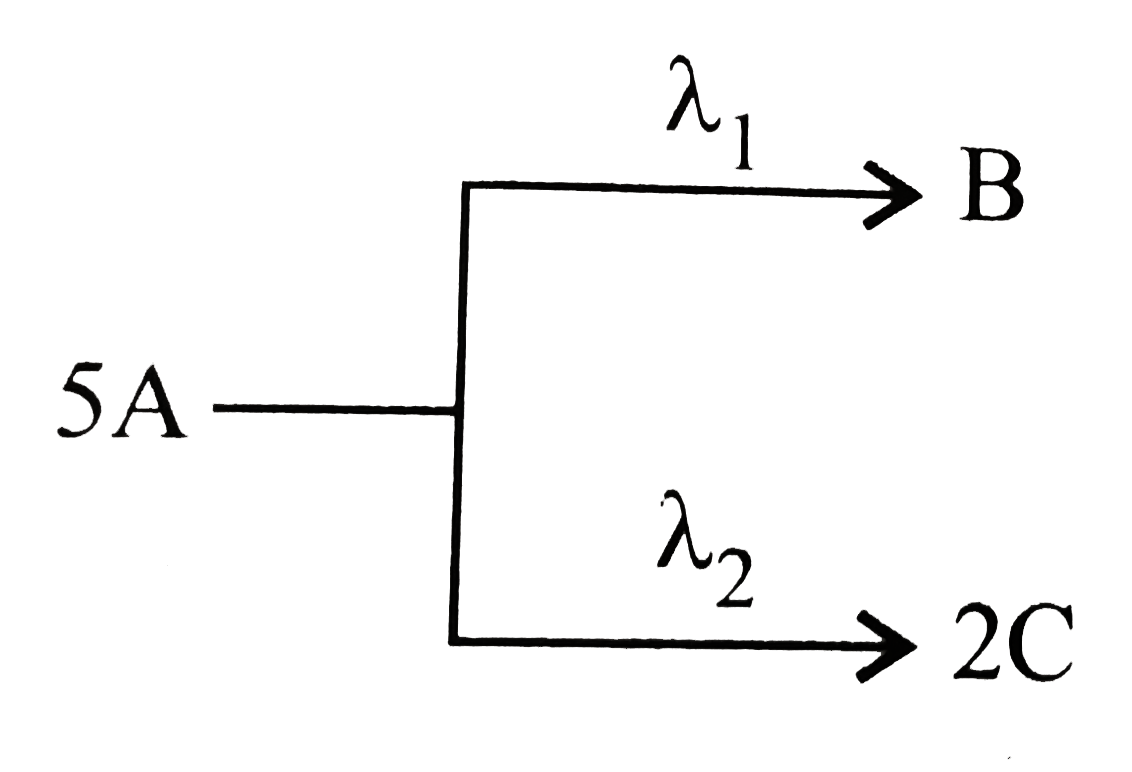A follow parallel path of first-order reactions giving B and C as
If the initial concentration of A is 0.25M, calculate the concentration of C after 5 hr of reaction.

λA=λ1+λ2=.15×10−5+5×10−6=20×10−6s−1
Also, 2.303log([A]0)[A]t=λs×t
∴2.303log(0.25)[A]t=20×10−6×5×60×60
∴[A]t=0.1744M
∴[A]decompound=[A]0−[A]t=025−0.1744
=0.−756=M
Fraction of C formed =[λ2λ1+λ2]×[A]decomposed×25
=0.0756×5×10−620×10−6×25
=7.56×10−3M
Topper's Solved these Questions
- BOOK - CENGAGE CHEMISTRY ENGLISHCHAPTER - NUCLEAR CHEMISTRYEXERCISE - Solved Example18videos
NUCLEAR CHEMISTRY
- BOOK - CENGAGE CHEMISTRY ENGLISHCHAPTER - NUCLEAR CHEMISTRYEXERCISE - Ex6.1 Objective15videos
NUCLEAR CHEMISTRY
- BOOK - CENGAGE CHEMISTRY ENGLISHCHAPTER - NCERT BASED EXERCISEEXERCISE - Nuclear Chemistry (NCERT Exercise)29videos
NCERT BASED EXERCISE
- BOOK - CENGAGE CHEMISTRY ENGLISHCHAPTER - ORGANIC COMPOUNDS WITH FUNCTIONAL GROUPEXERCISE - Archives Analytical And Descriptive24videos
ORGANIC COMPOUNDS WITH FUNCTIONAL GROUP
Similar Questions
Knowledge Check
- Question 1 - Select One
If initial concentration is doubled, the time for half-reaction is also doubled, the order of reaction is
AzeroBfirstCsecondDthird
The half-life periof of a first order reaction is…………..of initial concentration.
View SolutionIn a first-order reaction A→B, if k is rate constant and initial concentration of the reactant A is 0.5 M then the half-life is:
View SolutionFor a zero order reaction '[R]0 is the initial concentration
View SolutionThe rate constant for an isomerization reaction, A→B is 4.5×10−3−1min. If the initial concentration of A is 1M, calculate the rate of the reaction after 1h.
View SolutionThe rate constant for an isomerization reaction, A→B is 4.5×10−3−1min. If the initial concentration of A is 1M, calculate the rate of the reaction after 1h.
View SolutionIn a first-order reaction A→B, if K is the rate constant and initial concentration of the reactant is 0.5M, then half-life is
View SolutionIn a first order reaction A → B, if k is rate constant and initial concentration of the reactant A is 2 M then the half life of the reaction is:
View Solution

